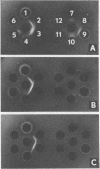Abstract
An immunogenic fraction from Pasteurella multocida was found to consist chiefly of a high-molecular-weight protein-polysaccharide complex containing 25 to 27% protein and 10.7% carbohydrate. The starting material was obtained by differential centrifugation at 105,000 X g of saline extract of P. multocida cells and further purified by gel filtration on Sepharose 2B. Three peaks were usually obtained after gel filtraion.pharose 2B. Three peaks were usually obtained after gel filtration. The component in the first peak amounted to about 10% of the starting material and eluted in the void volume. It was predominately carbohydrate, although some protein was present. Two inoculations of 10 to 20 mug of the first component induced up to 80% protection in mice against a challenge inoculation with P. multocida that killed 100% of the controls. The second, or major, component amounted to about 75 to 95% of the starting material. This fraction contained 25 to 27% protein and 10.7% carbohydrate. Small amounts, 10 to 20 mug, induced active immunity in mice and turkeys, but large amounts could be lethal; the mean lethal dose was 195 mug for mice and 5.7 mug for 10-day-old chicken embryos. The components in the third peak were primarily proteins that gave reactions of nonidentity with the antigens of peak II in gel diffusion. The components present in the third fraction were definitely less effective in the induction of protective immunity than those present in the first or second. Analyses of the protective antigen(s) by the isoelectric focusing procedure in a pH 3 to 10 gradient showed that all of the precipitinogenic activity was found in the range of pH 3 to 4, with a peak at pH 3.7.
Full text
PDF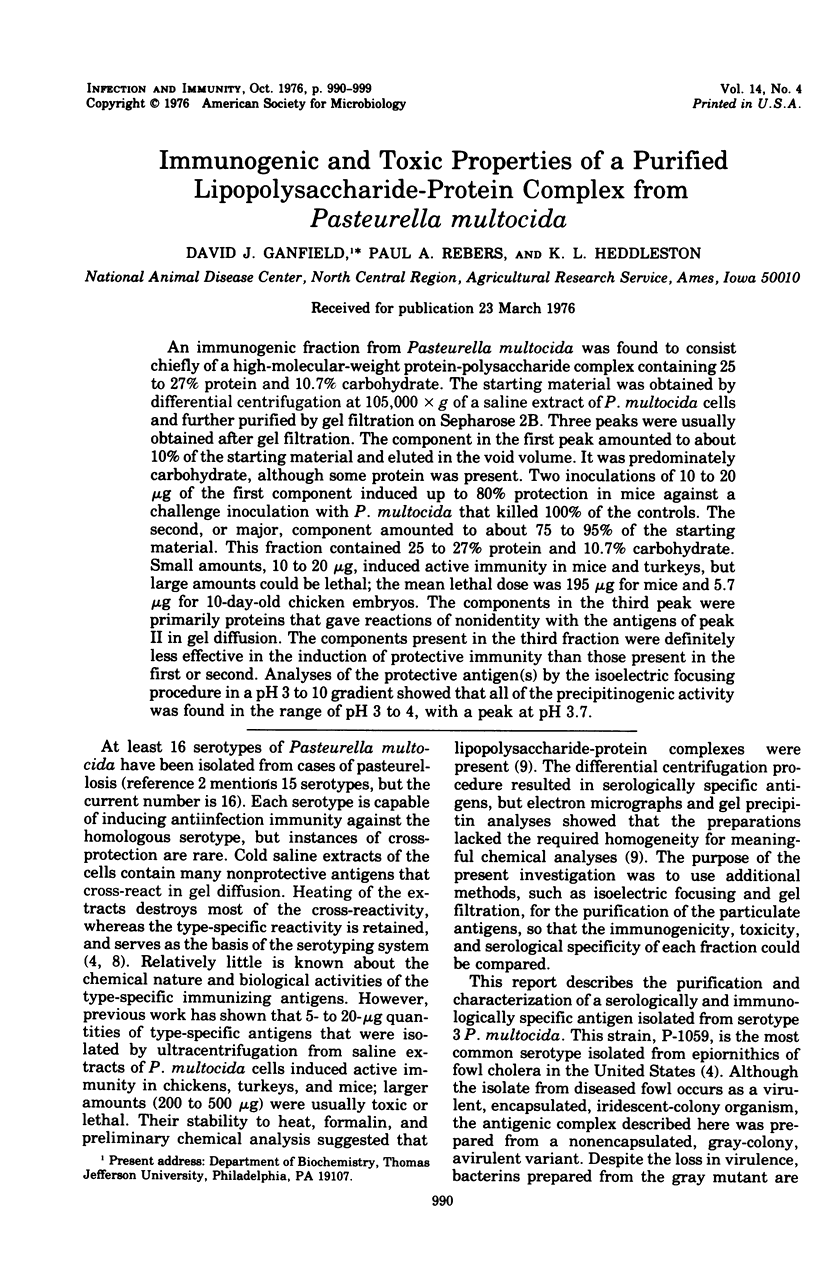
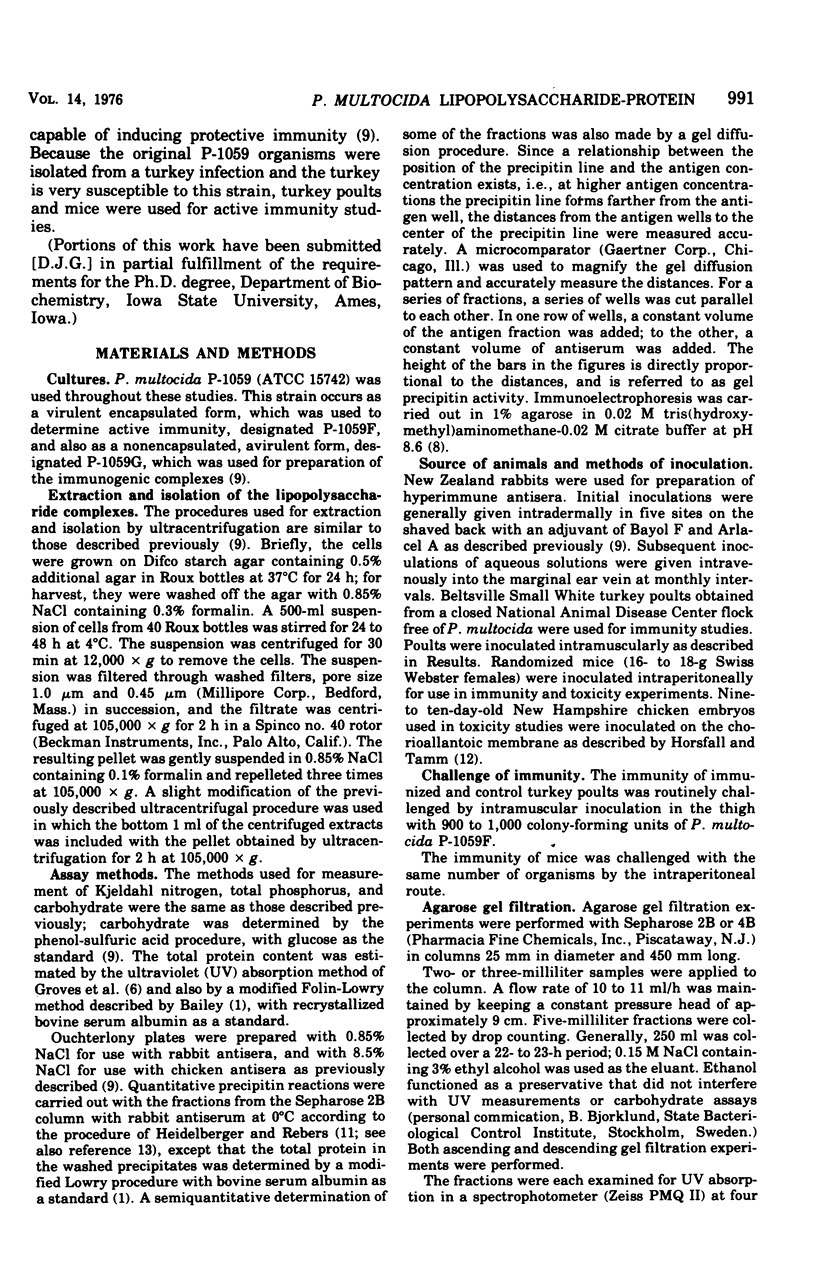
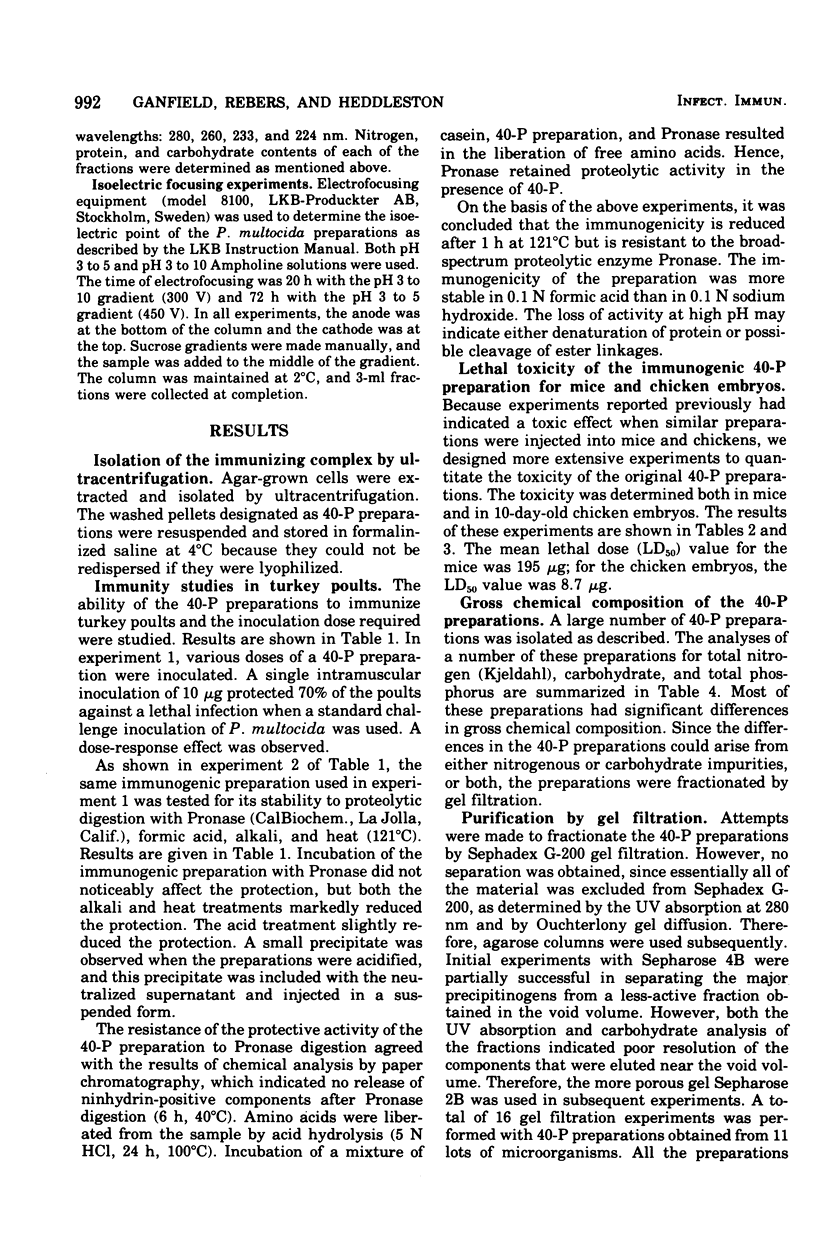
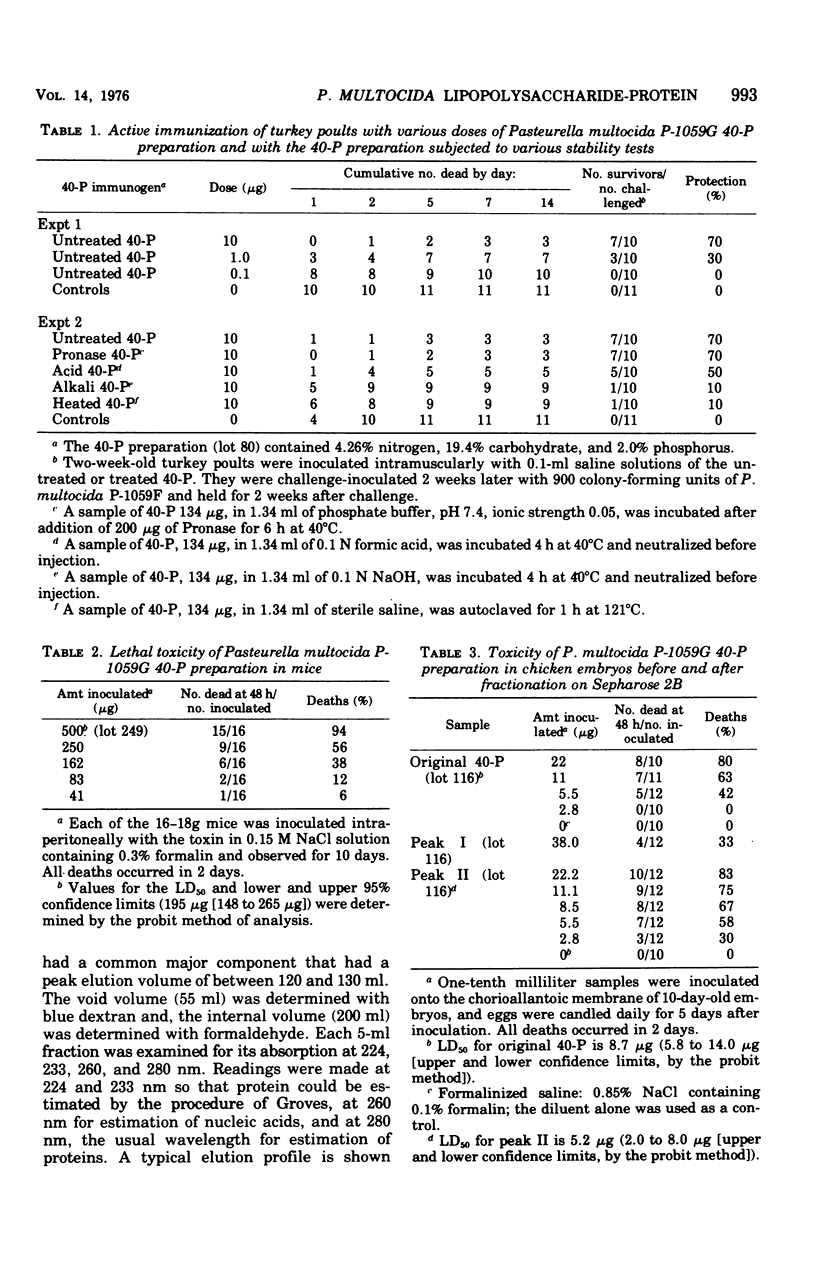
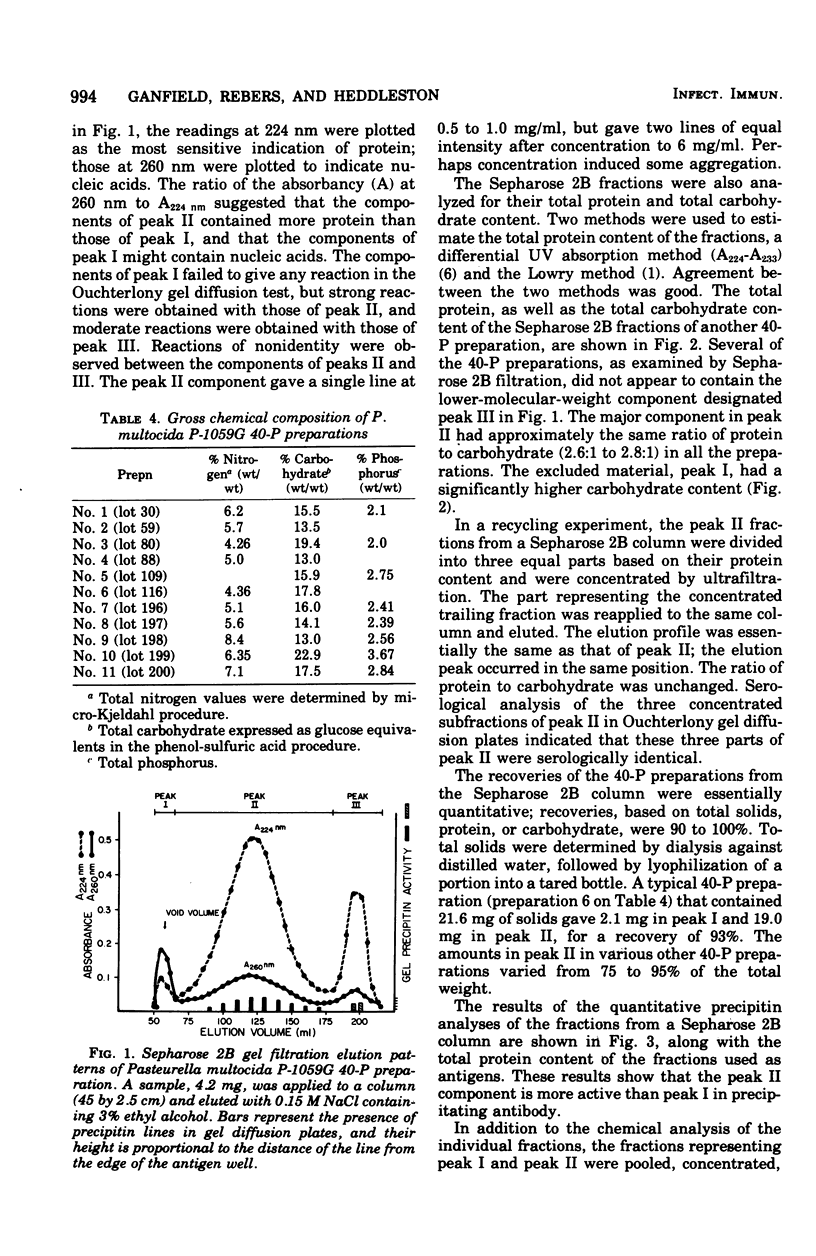
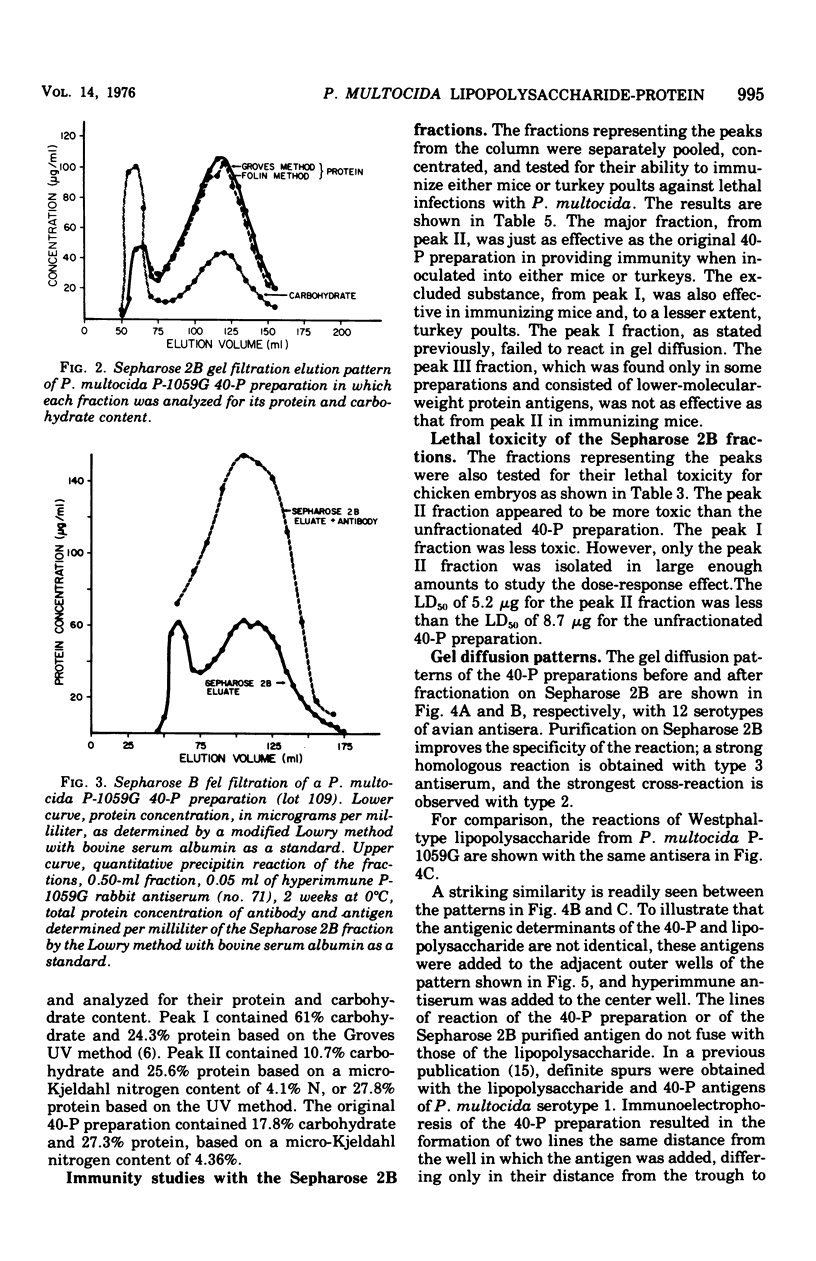
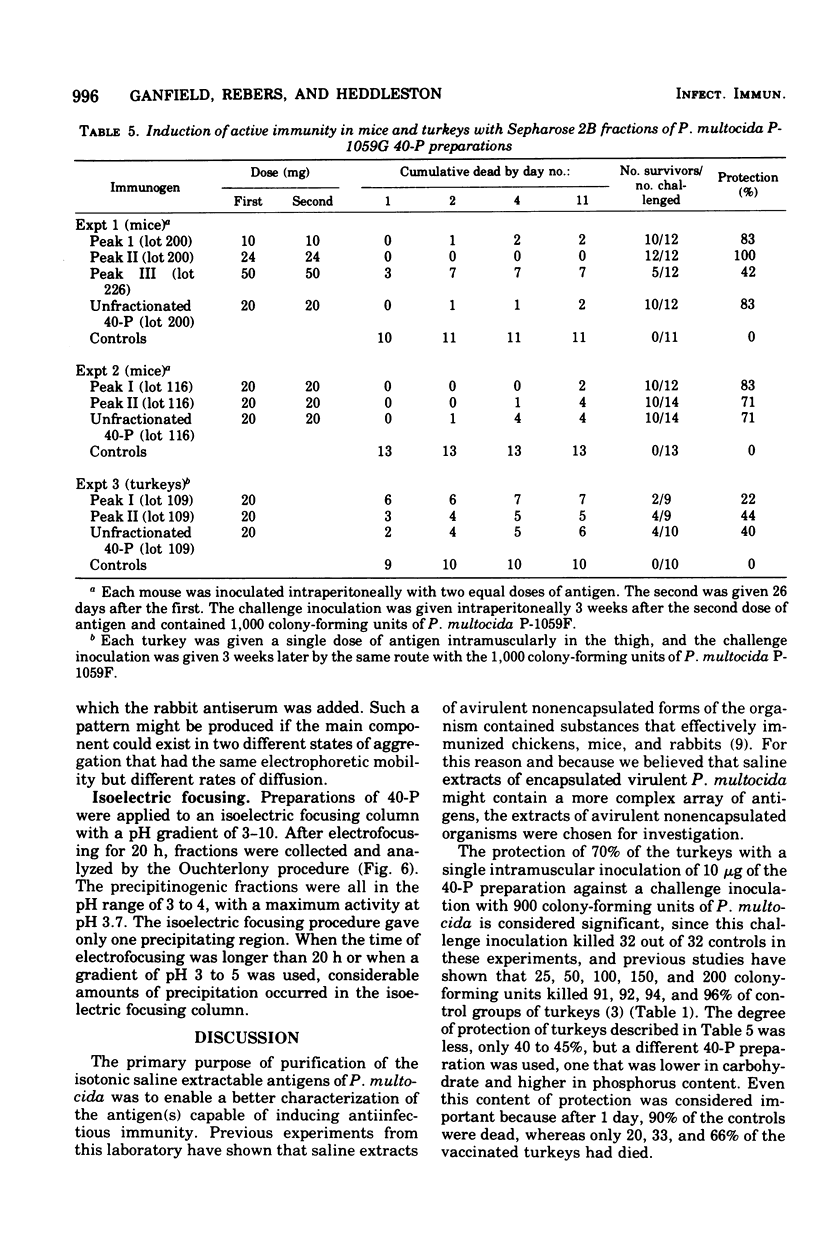
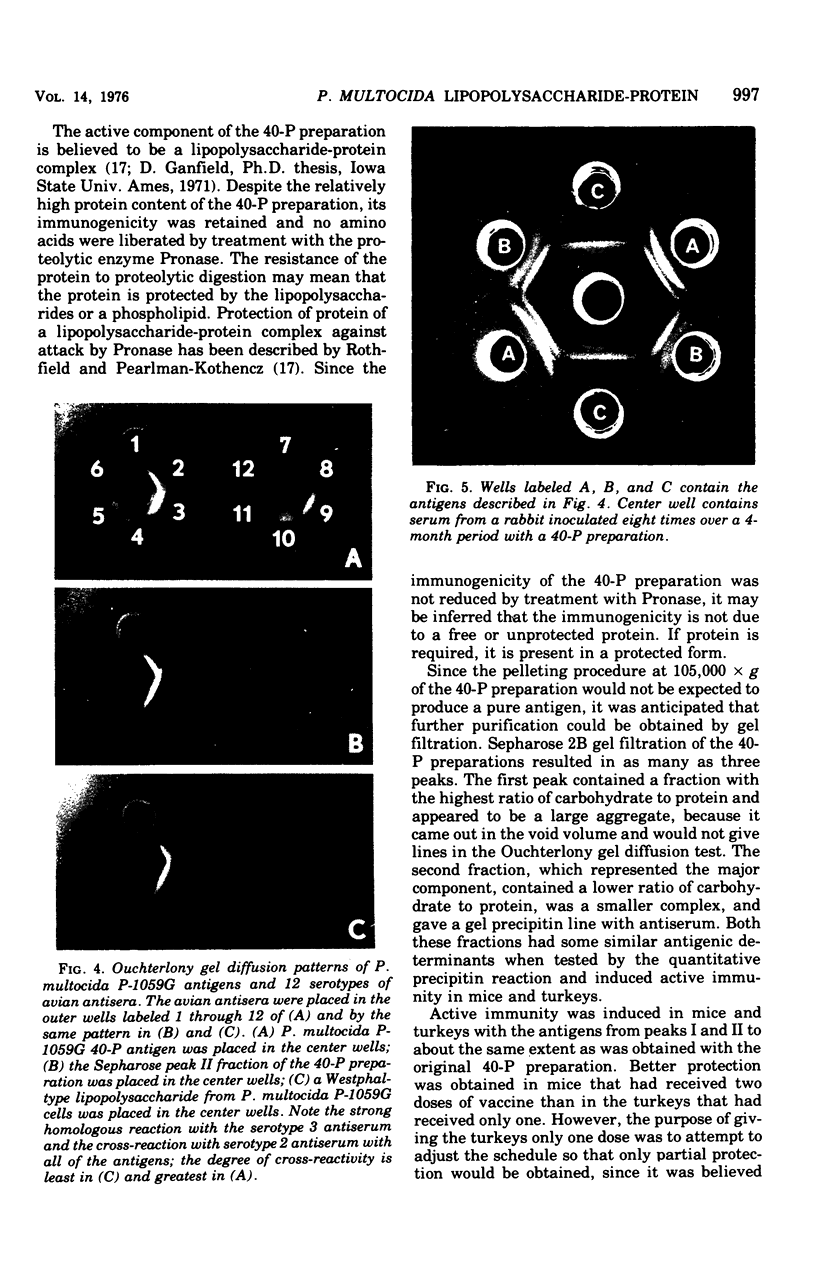
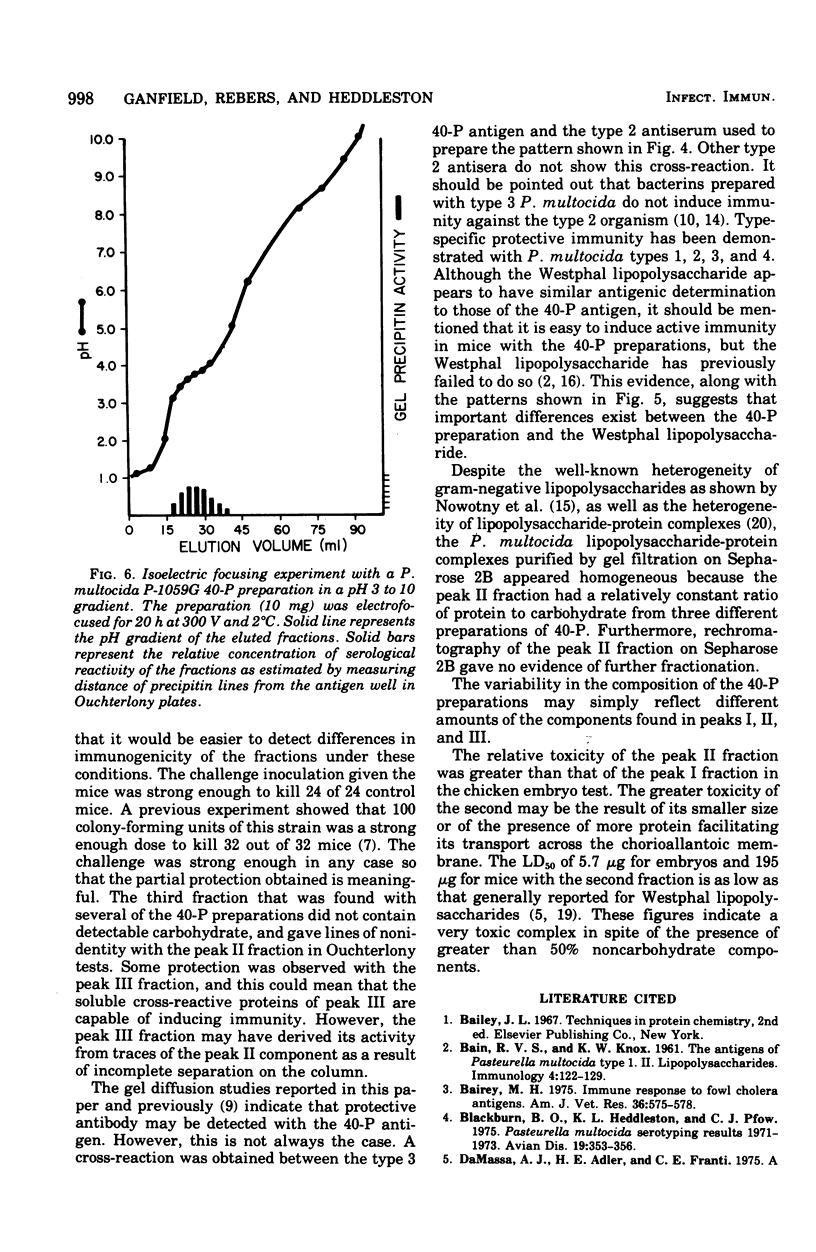
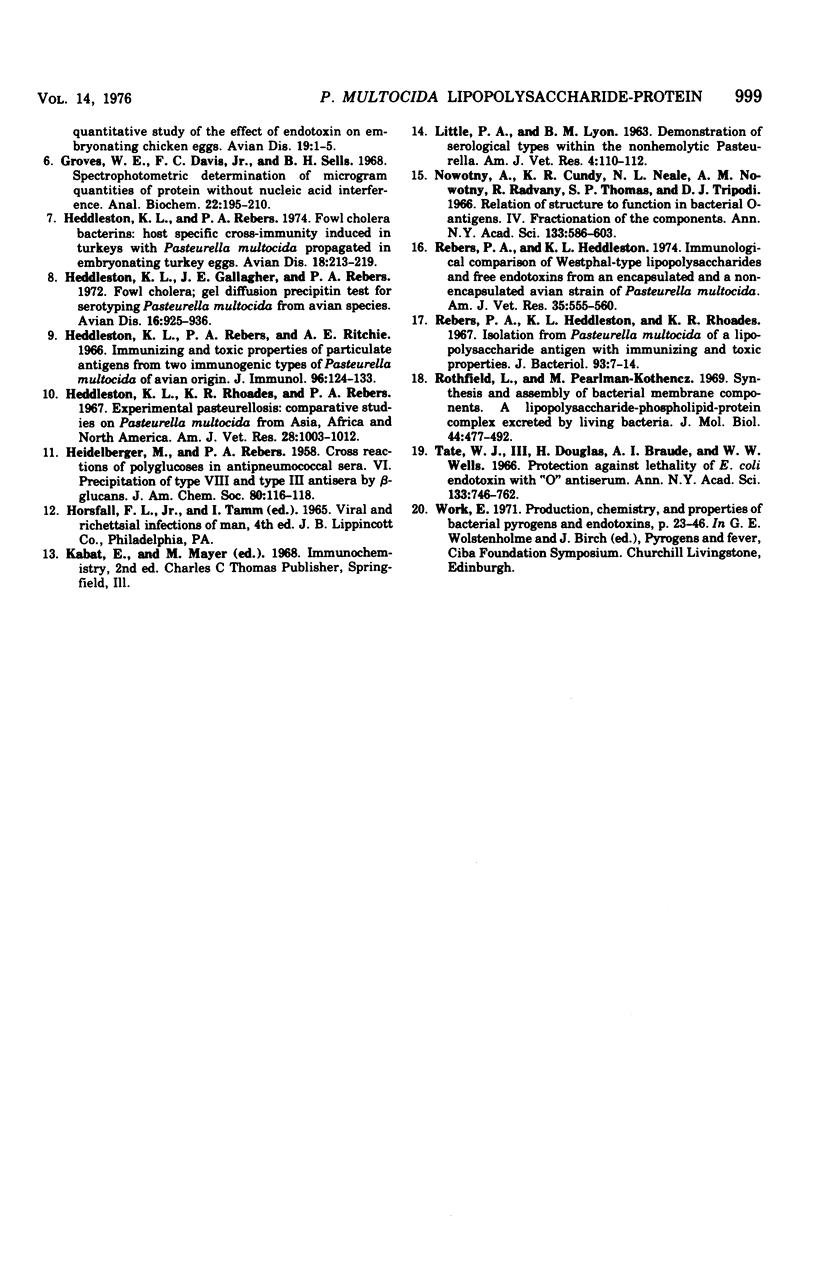
Images in this article
Selected References
These references are in PubMed. This may not be the complete list of references from this article.
- BAIN R. V., KNOX K. W. The antigens of Pasteurella multocida type I. II. Lipopolysaccharides. Immunology. 1961 Apr;4:122–129. [PMC free article] [PubMed] [Google Scholar]
- Bairey M. H. Immune response to fowl cholera antigens. Am J Vet Res. 1975 Apr;36(4 Pt 2):575–578. [PubMed] [Google Scholar]
- Blackburn B. O., Heddleston K. L., Pfow C. J. Pasteurella multocida serotyping results (1971-1973). Avian Dis. 1975 Apr-Jun;19(2):353–356. [PubMed] [Google Scholar]
- DaMassa A. J., Adler H. E., Franti C. E. A quantitative study of the effect of endotoxin on embryonating chicken eggs. Avian Dis. 1975 Jan-Mar;19(1):1–5. [PubMed] [Google Scholar]
- Groves W. E., Davis F. C., Jr, Sells B. H. Spectrophotometric determination of microgram quantities of protein without nucleic acid interference. Anal Biochem. 1968 Feb;22(2):195–210. doi: 10.1016/0003-2697(68)90307-2. [DOI] [PubMed] [Google Scholar]
- Heddleston K. L., Gallagher J. E., Rebers P. A. Fowl cholera: gel diffusion precipitin test for serotyping Pasteruella multocida from avian species. Avian Dis. 1972 Jul-Sep;16(4):925–936. [PubMed] [Google Scholar]
- Heddleston K. L., Rhoades K. R., Rebers P. A. Experimental pasteurellosis: comparative studies on Pasteurella multocida from Asia, Africa, and North America. Am J Vet Res. 1967 Jul;28(125):1003–1012. [PubMed] [Google Scholar]
- Nowotny A., Cundy K. R., Neale N. L., Nowotny A. M., Radvany R., Thomas S. P., Tripodi D. J. Relation of structure to function in bacterial O-antigens. IV. Fractionation of the components. Ann N Y Acad Sci. 1966 Jun 30;133(2):586–603. doi: 10.1111/j.1749-6632.1966.tb52391.x. [DOI] [PubMed] [Google Scholar]
- Rebers P. A., Heddleston K. L., Rhoades K. R. Isolation from Pasteurella multocida of a lipopolysaccharide antigen with immunizing and toxic properties. J Bacteriol. 1967 Jan;93(1):7–14. doi: 10.1128/jb.93.1.7-14.1967. [DOI] [PMC free article] [PubMed] [Google Scholar]
- Rothfield L., Pearlman-Kothencz M. Synthesis and assembly of bacterial membrane components. A lipopolysaccharide-phospholipid-protein complex excreted by living bacteria. J Mol Biol. 1969 Sep 28;44(3):477–492. doi: 10.1016/0022-2836(69)90374-x. [DOI] [PubMed] [Google Scholar]
- Tate W. J., 3rd, Douglas H., Braude A. I., Wells W. W. Protection against lethality of E. coli endotoxin with "O" antiserum. Ann N Y Acad Sci. 1966 Jun 30;133(2):746–762. doi: 10.1111/j.1749-6632.1966.tb52403.x. [DOI] [PubMed] [Google Scholar]




